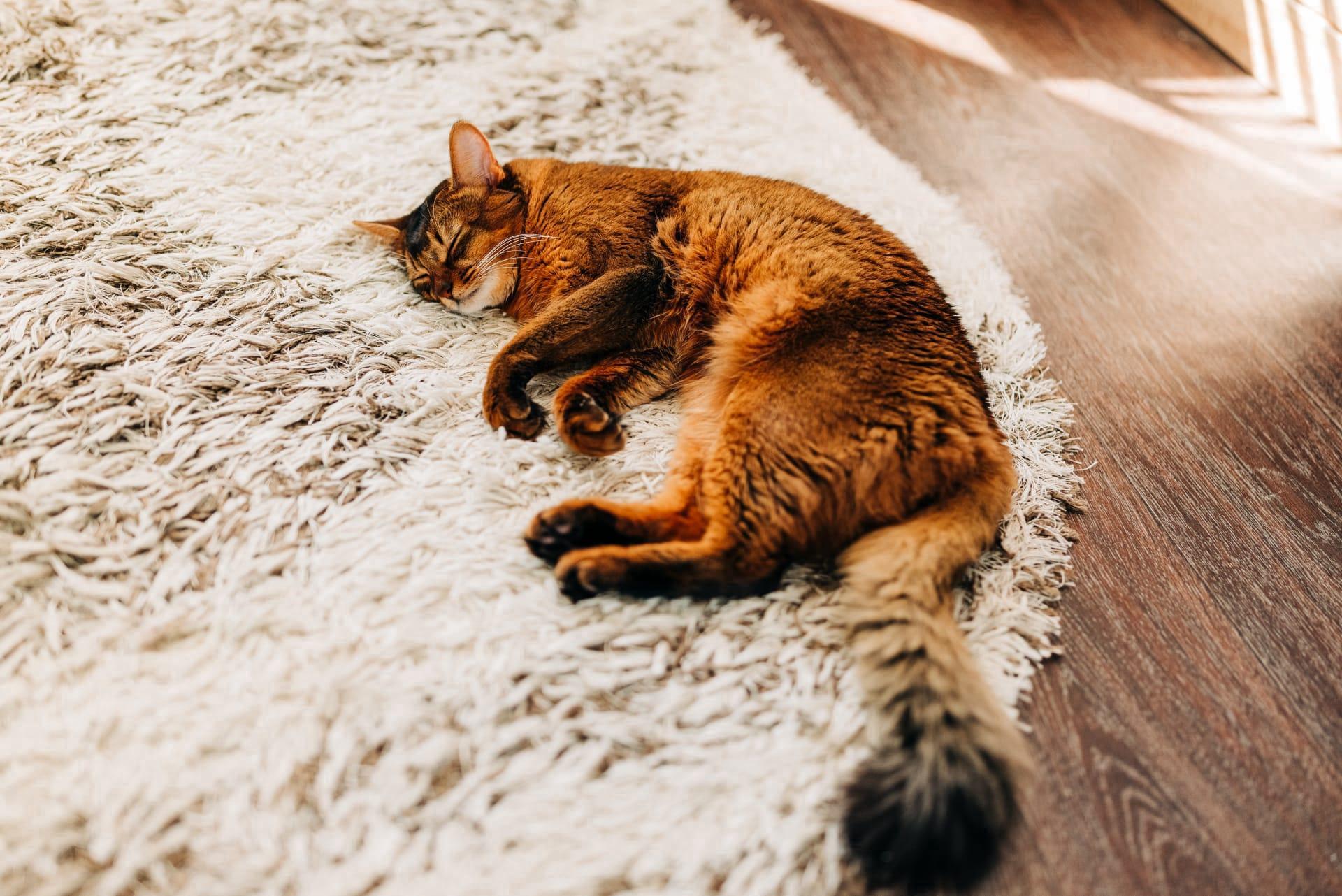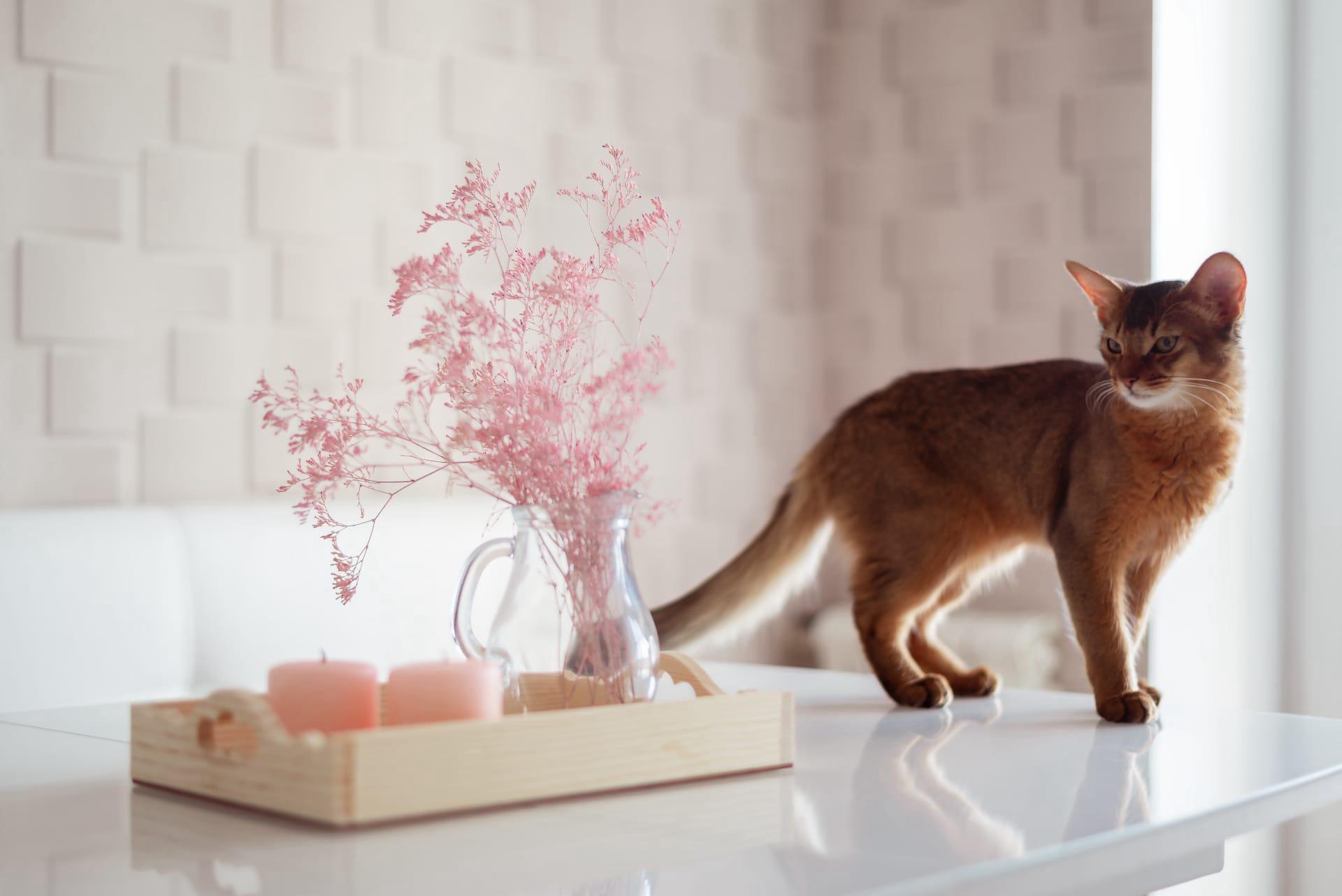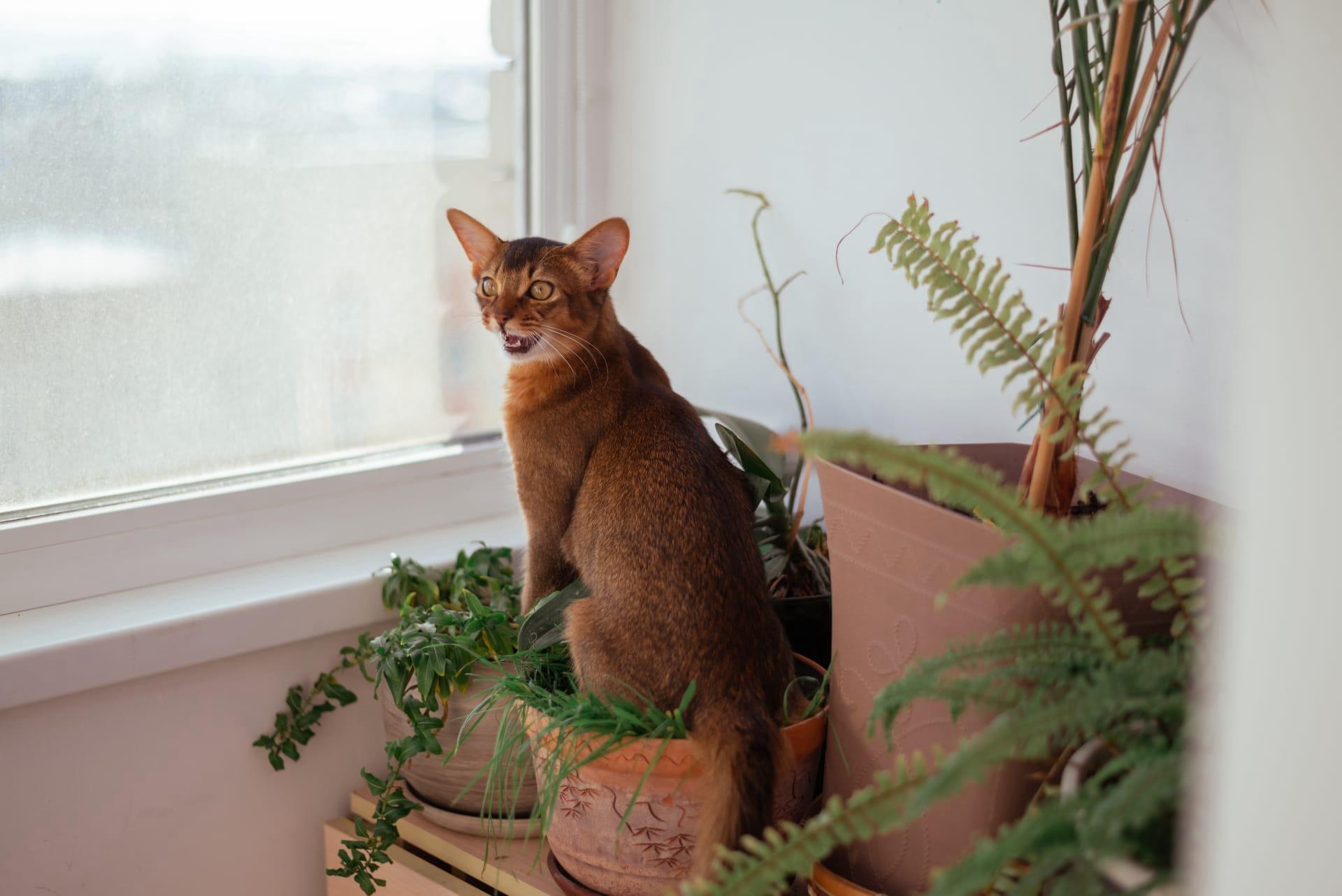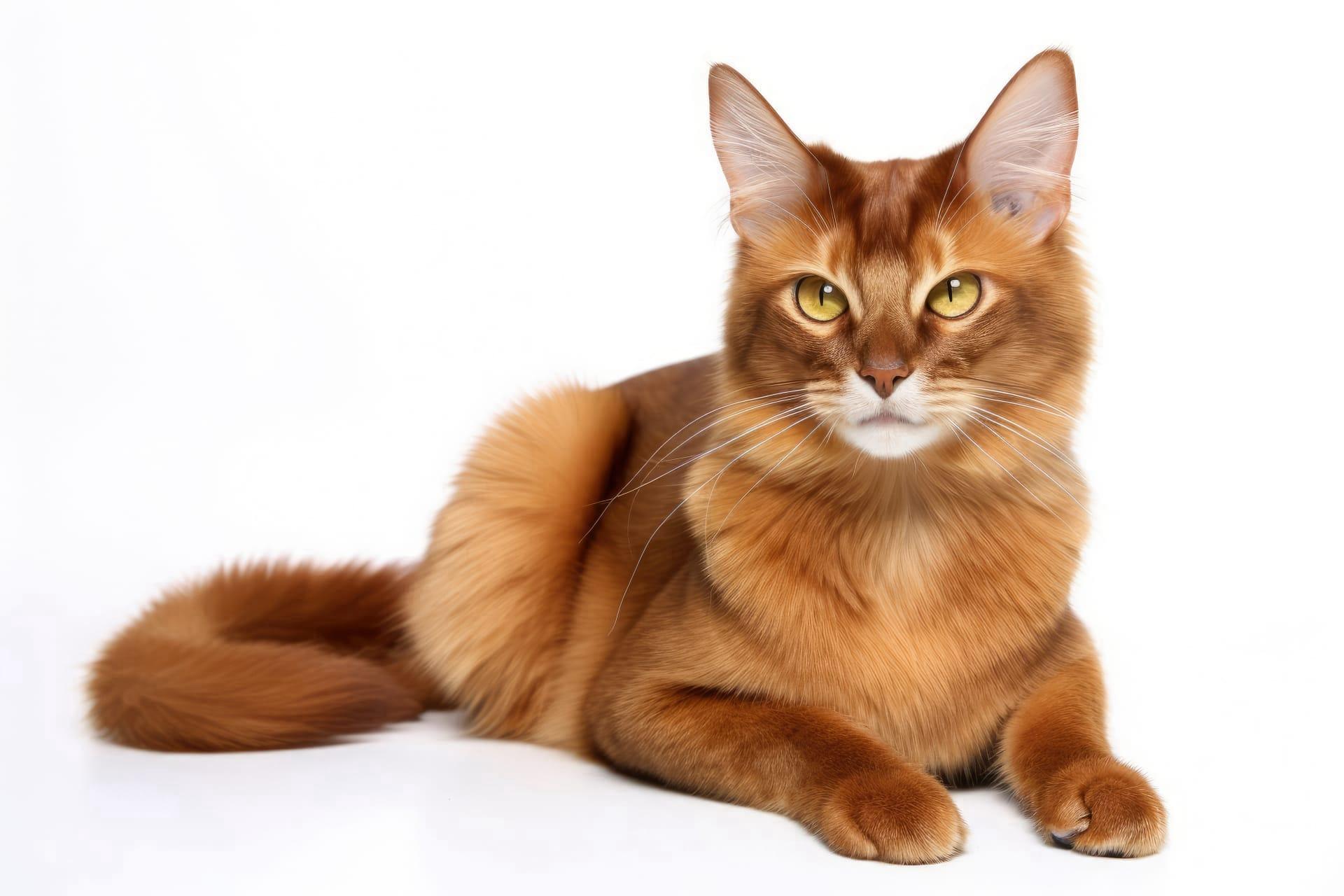Somali Cat Characteristics
- Home /
- Mini Encyclopedia /
- Animal /
- Somali Cat Characteristics
1
The Somali cat, a stunning long-haired breed, boasts a medium to large body size, with adult males typically weighing between 10 to 16 pounds (4.5 to 7.2 kg) and females slightly lighter. This breed is characterized by a muscular build, a bushy tail, and a striking ruff around its neck. Their coat, a mix of soft and dense fur, displays a unique ticked pattern, contributing to their wild and elegant appearance. Somali cats possess large, almond-shaped eyes that range in color from green to copper, adding to their expressive faces. These felines are known for their longevity, often living 12 to 16 years, provided they are well cared for and free from genetic health issues.
One of the Somali cat's most remarkable organs is its tail. Unlike the shorter tails of many other breeds, the Somali's tail is long and bushy, often called a "fox tail" due to its resemblance to that of a fox. This tail is not just for show; it serves several important functions, including helping the cat balance while navigating through various terrains and communicating with other cats through subtle movements and positions. The tail's thick fur also serves as insulation, keeping the cat warm in cooler environments.

2
Question: What is the most common health issue faced by Somali cats?
Answer: Somali cats are generally healthy, but they are prone to a genetic condition known as pyruvate kinase deficiency (PKD). PKD is an inherited disorder that affects the enzyme necessary for red blood cell metabolism, leading to hemolytic anemia. Symptoms can include lethargy, weakness, weight loss, and jaundice. Early diagnosis and management are crucial for the well-being of affected cats. Regular veterinary check-ups can help identify the condition early on, and treatments may include medications, dietary adjustments, and in severe cases, blood transfusions.

3
Somali cats are highly active and playful, exhibiting a kitten-like demeanor well into adulthood. They excel in agility, often seen leaping to high places or engaging in fast-paced games. Their athletic build allows them to perform impressive jumps and sprints. Somali cats enjoy interactive toys and puzzles that challenge their intelligence and satisfy their natural hunting instincts.
When it comes to feeding, Somali cats benefit from a balanced diet that supports their high energy levels. A mix of high-quality dry and wet food, rich in protein, is ideal for maintaining their muscular physique and healthy coat. Portion control and regular feeding times help prevent obesity, especially since Somalis are known to be enthusiastic eaters. Fresh water should always be available, as proper hydration is key to their overall health.

4
Somali cats adapt well to indoor environments, thriving in homes where they can explore and play. While they can adjust to living in apartments, access to safe, enclosed outdoor spaces is beneficial for their physical and mental health. These cats are social and form strong bonds with their human families, often following their owners around the house and participating in daily activities.
The breeding of Somali cats requires careful genetic screening to prevent hereditary diseases like pyruvate kinase deficiency. Responsible breeders ensure that their cats are healthy and well-socialized before going to their new homes. Somali cats typically have litters of 3 to 5 kittens. The kittens develop slowly, reaching full physical maturity at around 18 months. Early socialization and interaction with humans and other pets are crucial for their development into well-adjusted adults.

5
Book: "The Elegant Somali Cat" is a comprehensive guide authored by Jean Simmonds, published in the United Kingdom during the late 1990s. This book dives deep into the origins, development, and characteristics of the Somali cat breed. Simmonds, a renowned cat breeder, shares her extensive knowledge on care, health issues, breeding practices, and the breed's unique behavioral traits. Through personal anecdotes and expert advice, this book serves as an invaluable resource for both current and prospective Somali cat owners.
Book: "Somali Cats: A Complete Pet Owner's Guide" by Alex Meier, released in the early 2000s in the United States, offers a detailed overview of the breed's care, feeding, health, and training. Meier, a veteran veterinarian with a special interest in feline genetics, provides readers with practical tips on raising a Somali cat, highlighting their playful nature and physical attributes. The book also discusses the breed's history and offers insights into ensuring a healthy, happy life for these affectionate and active felines.